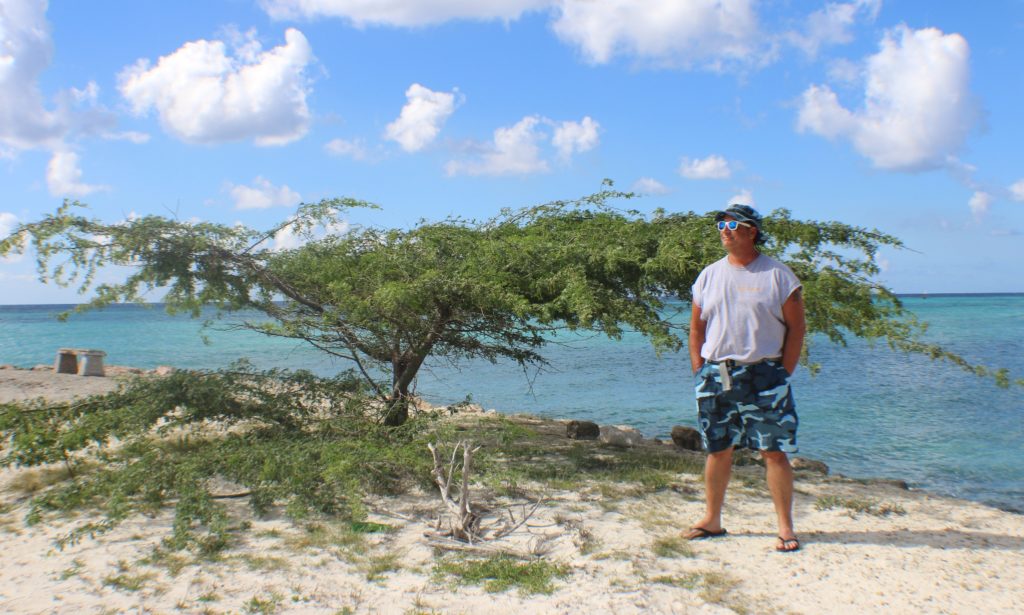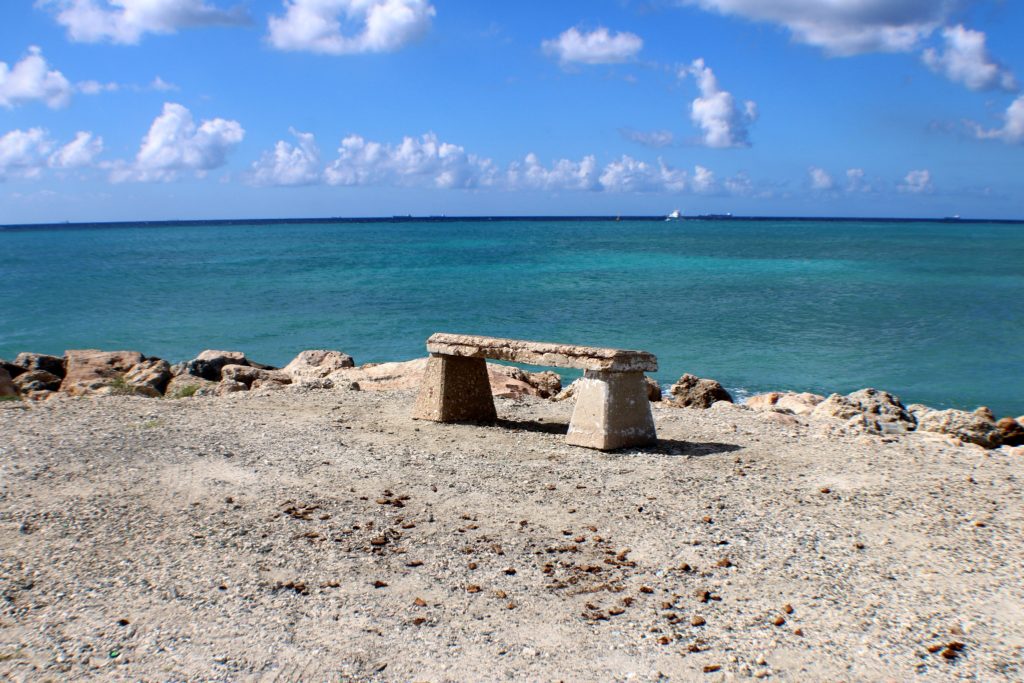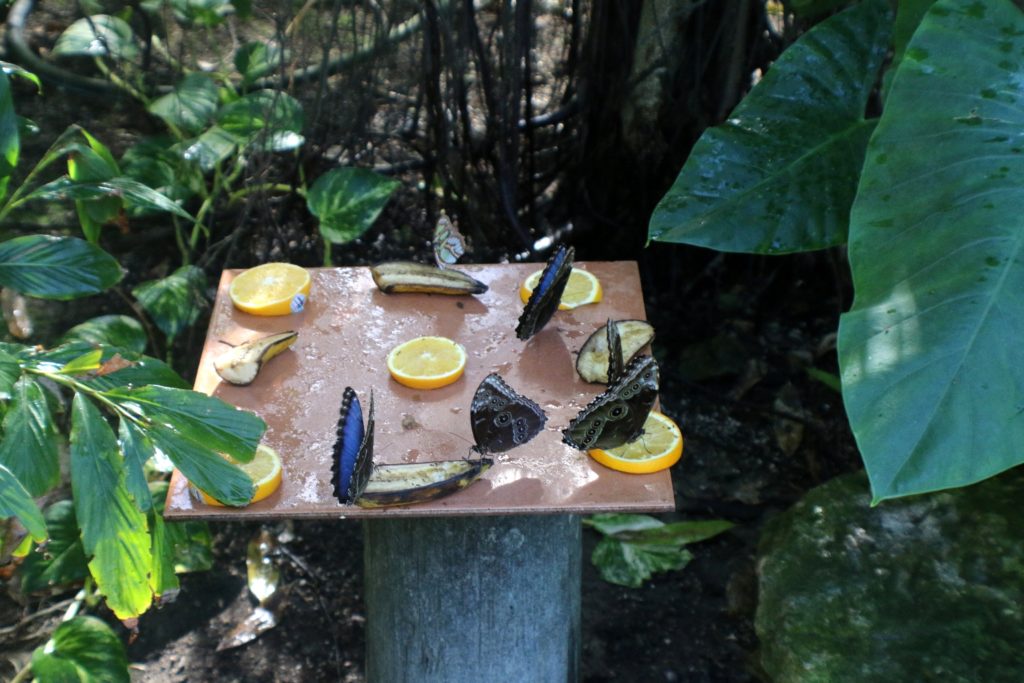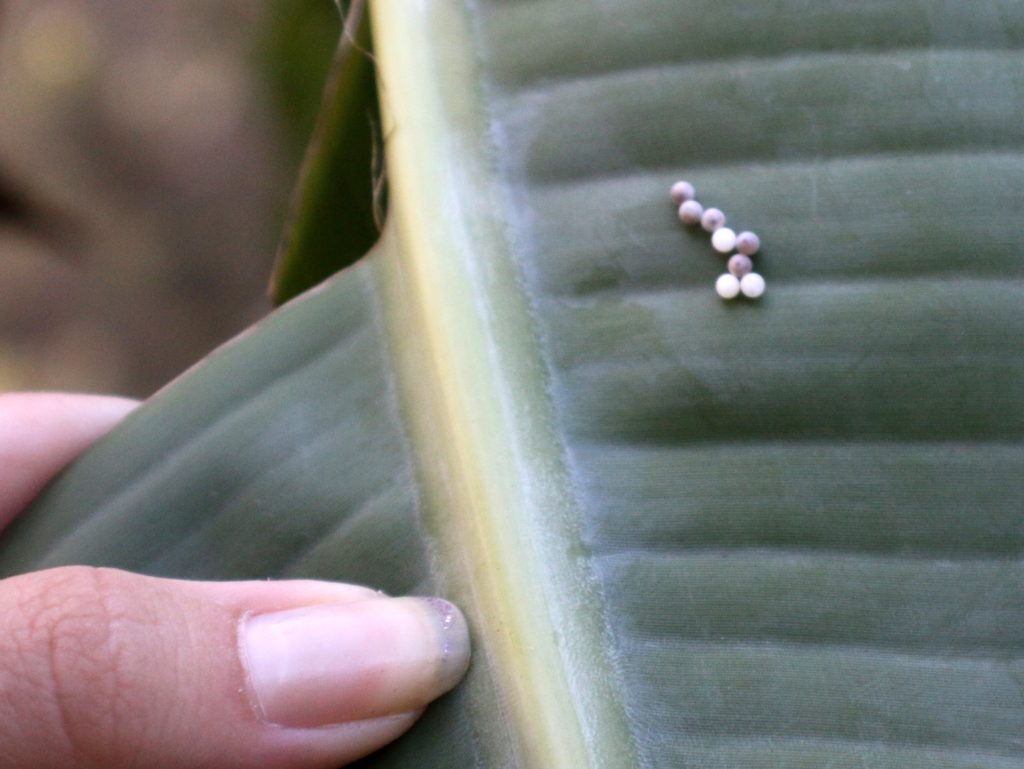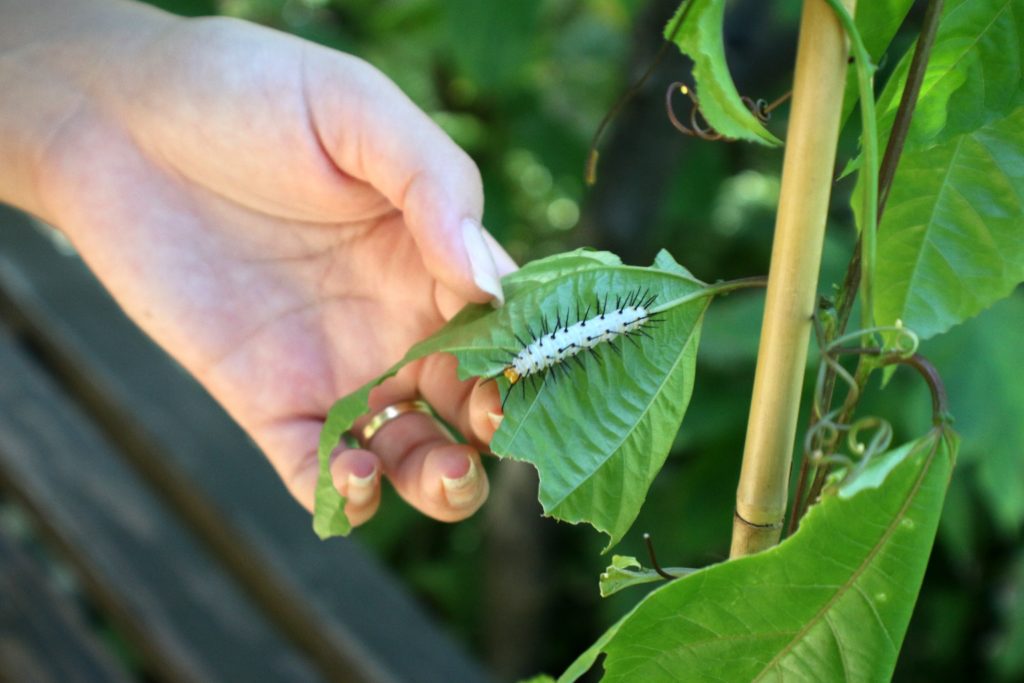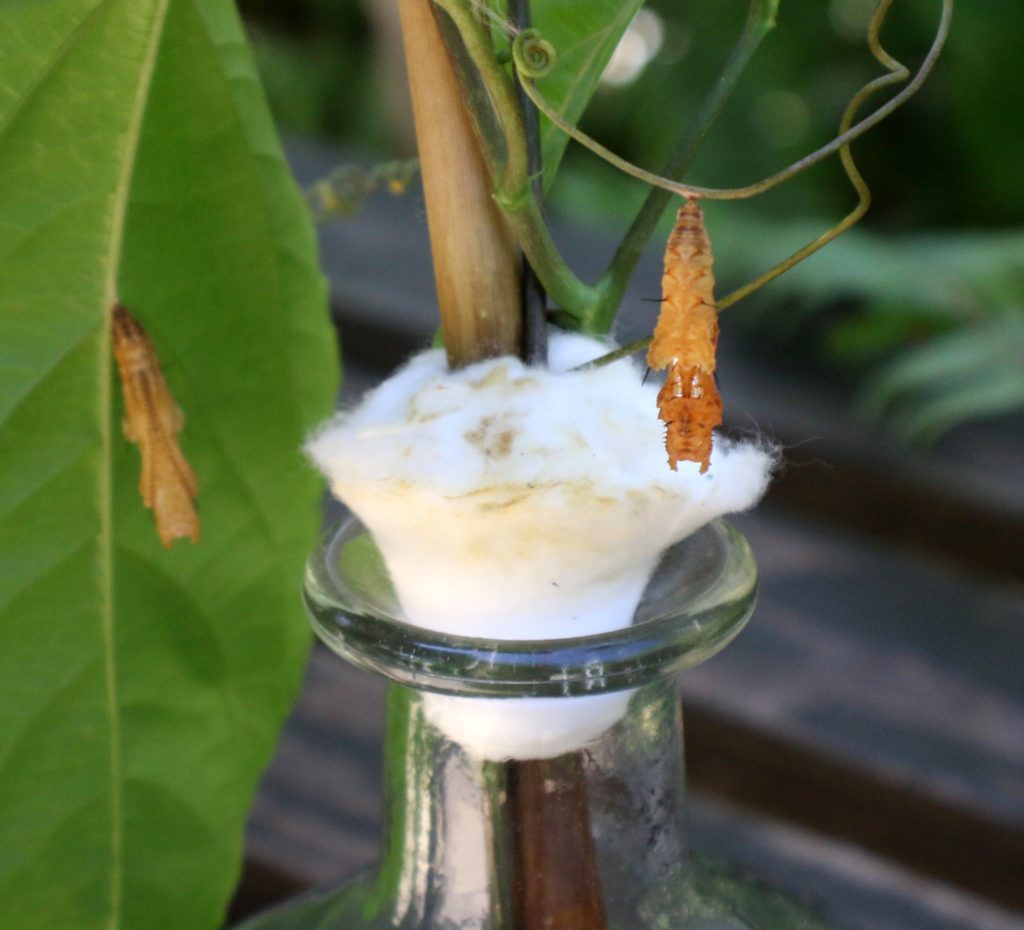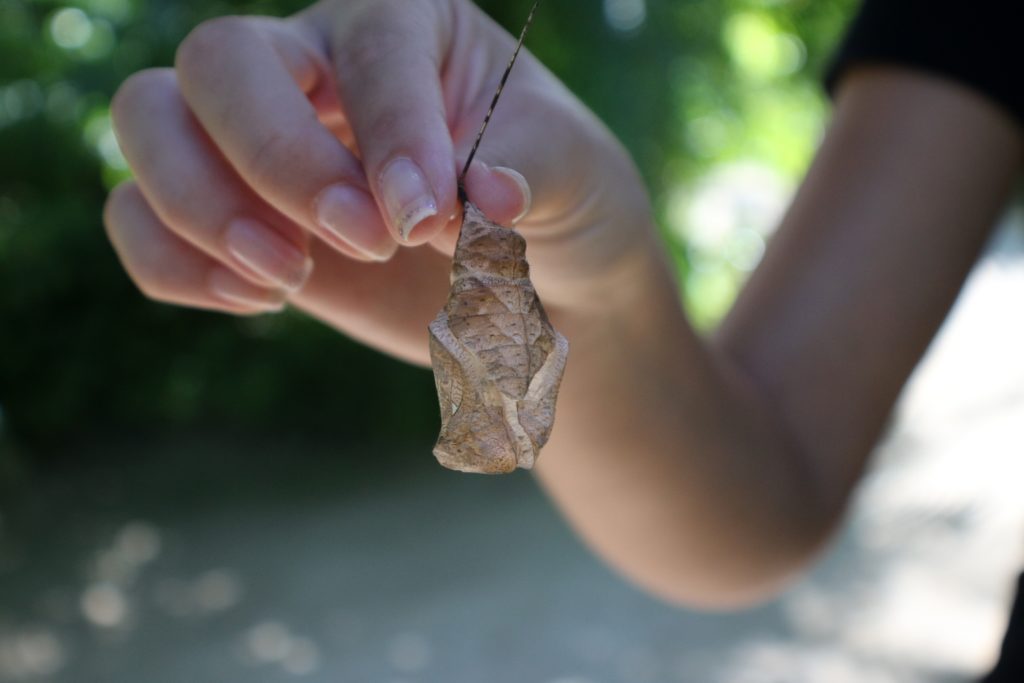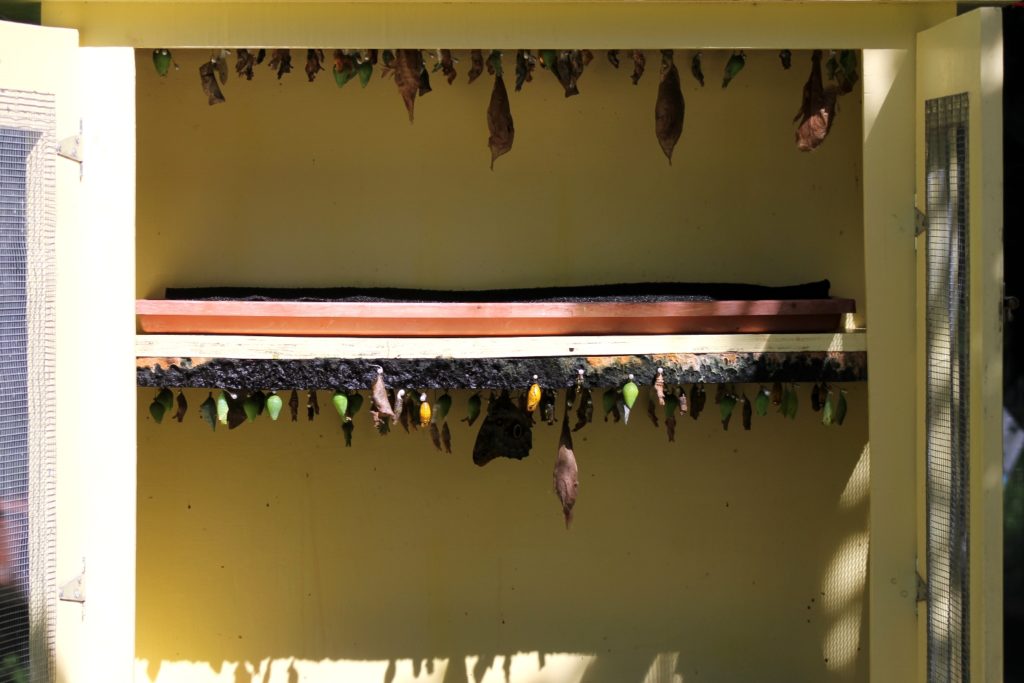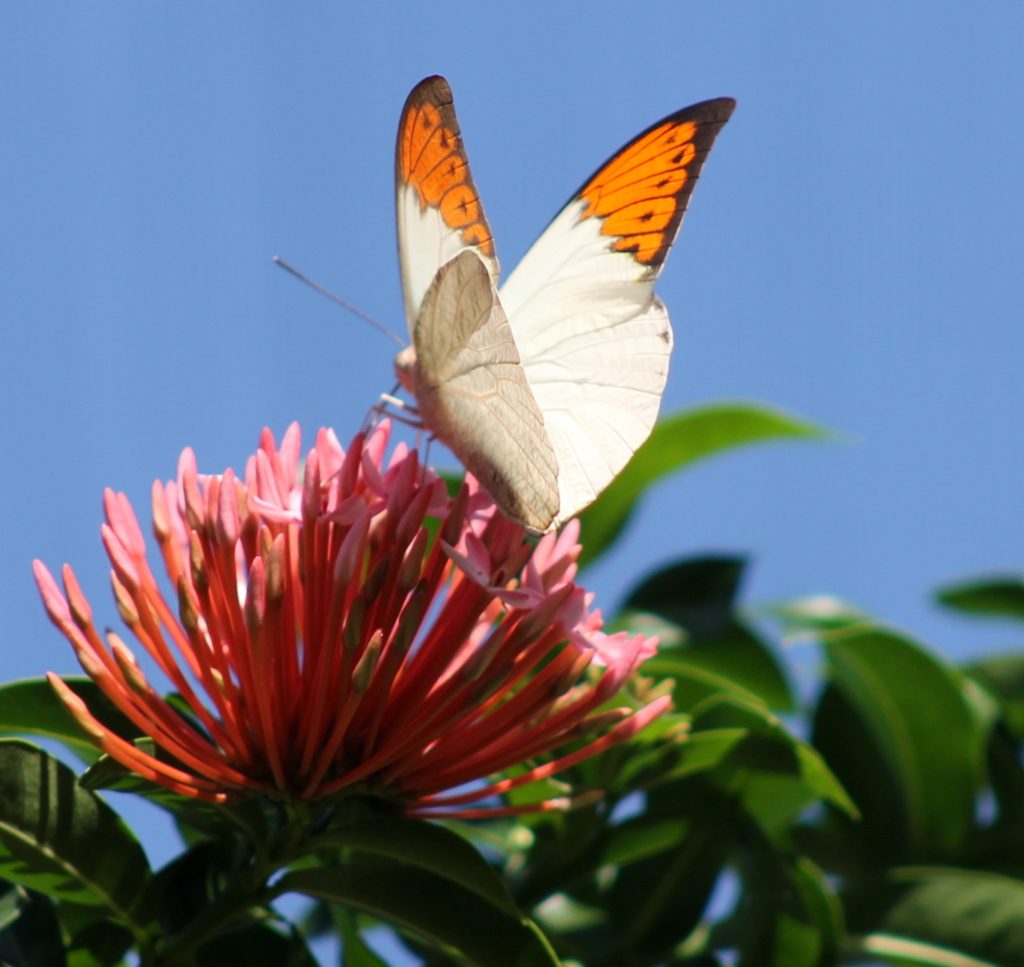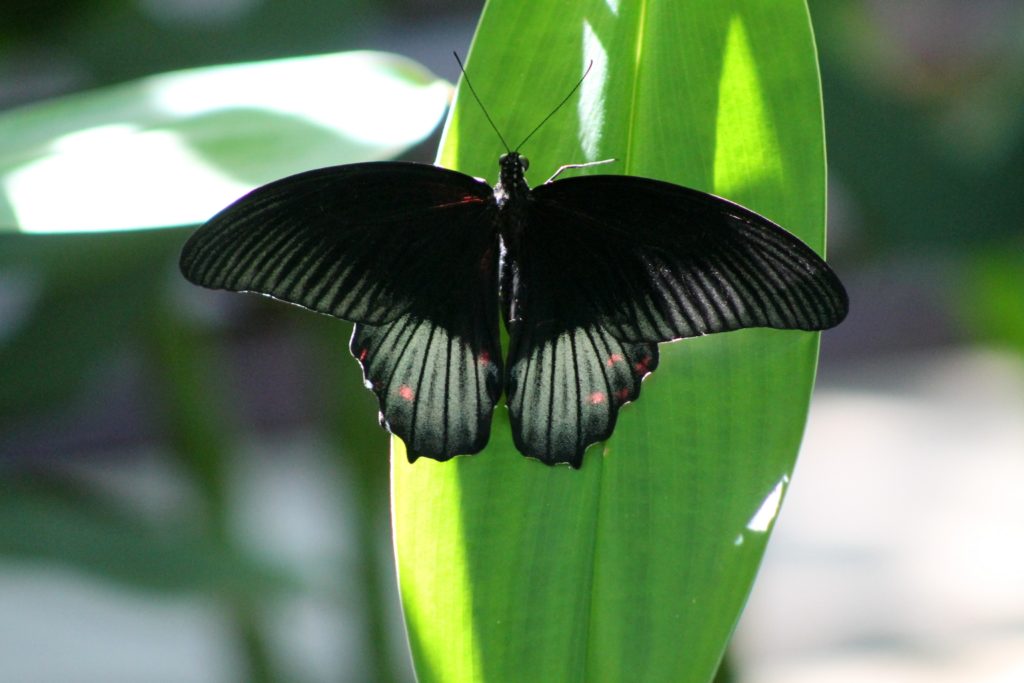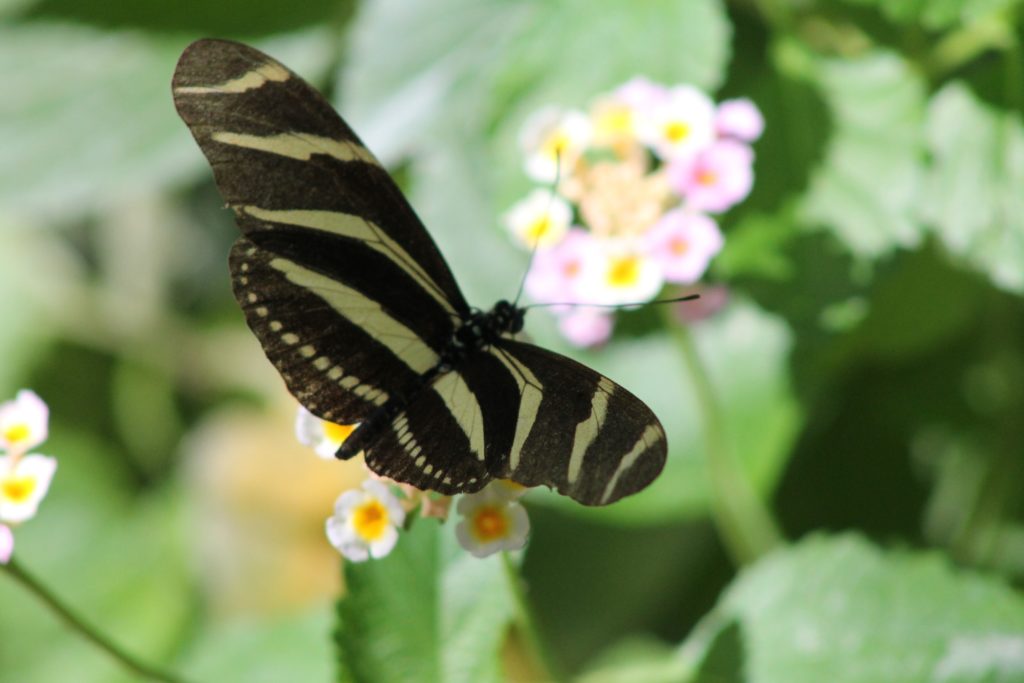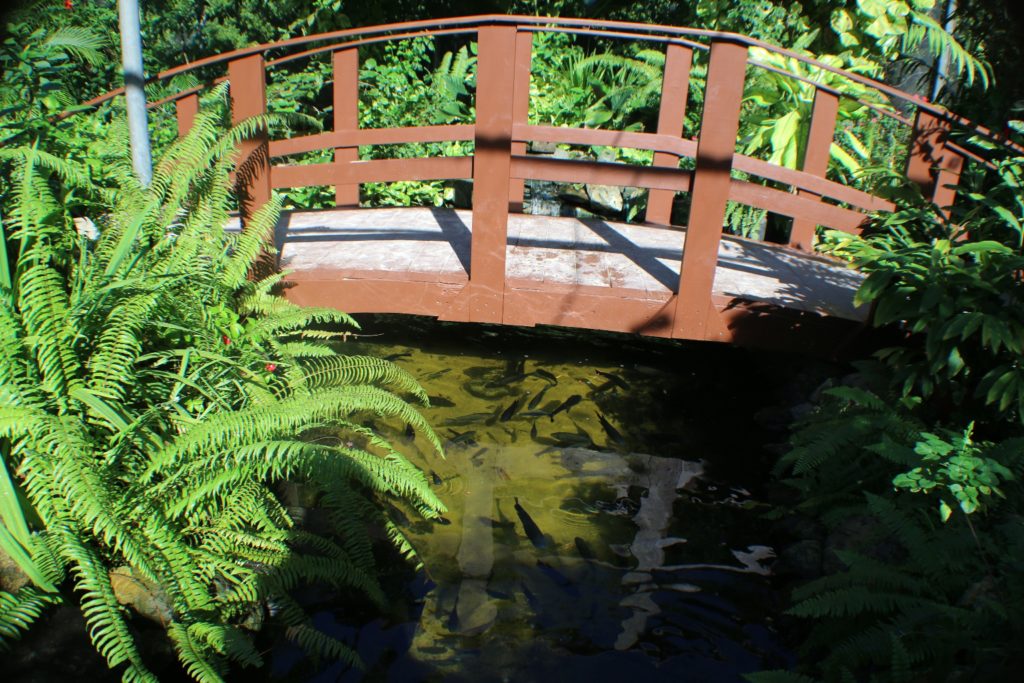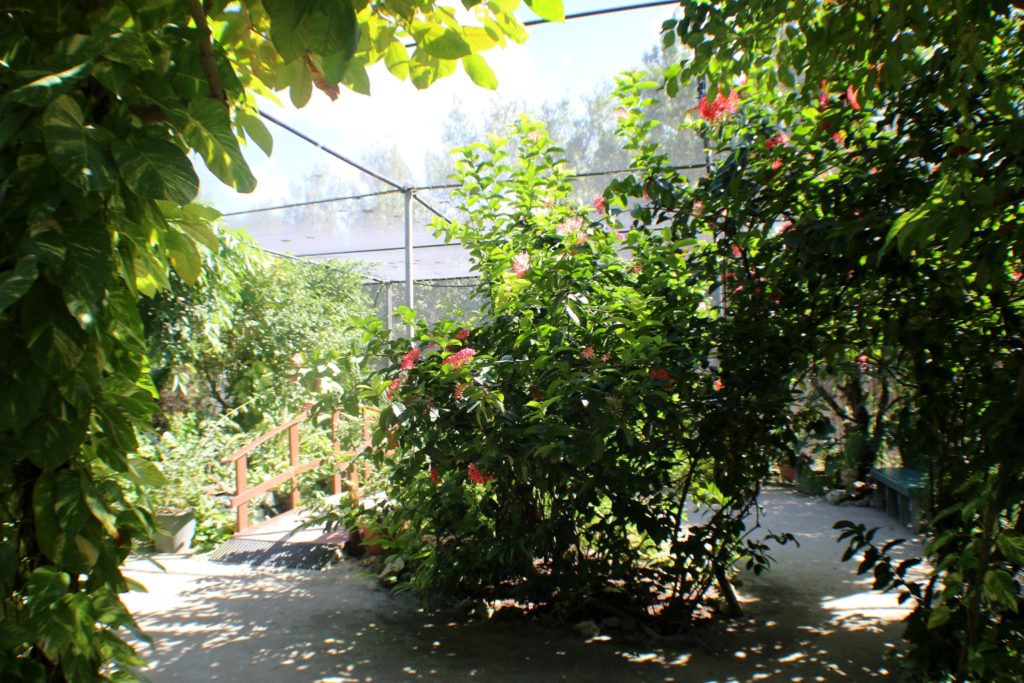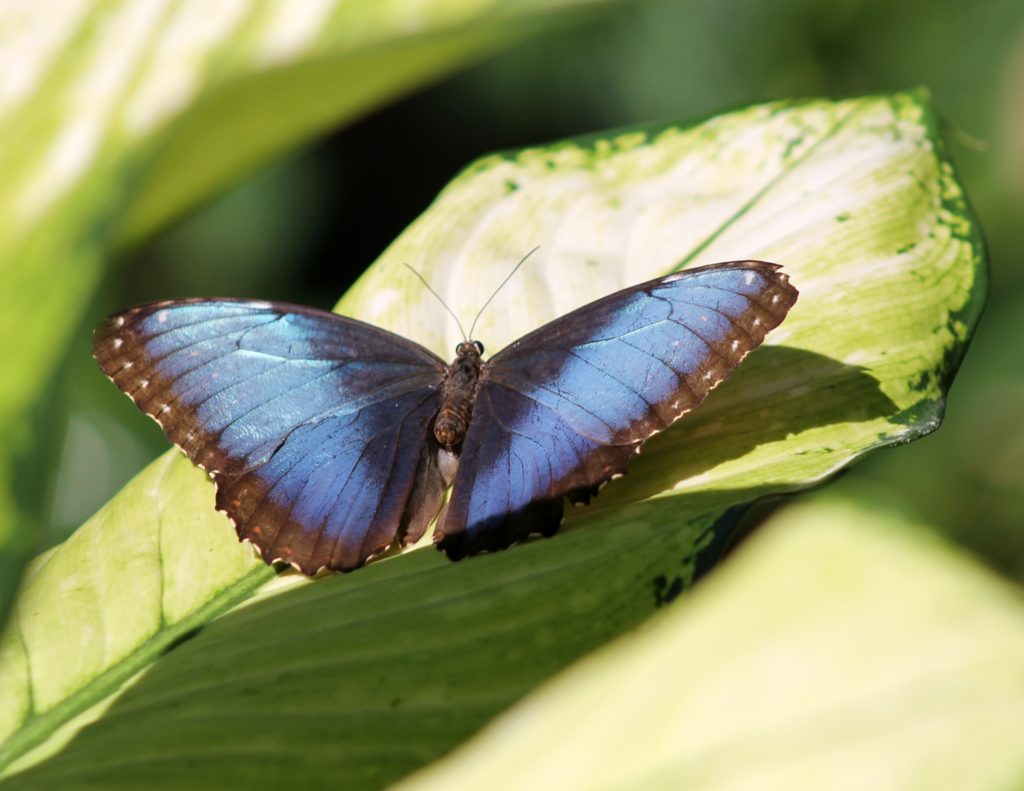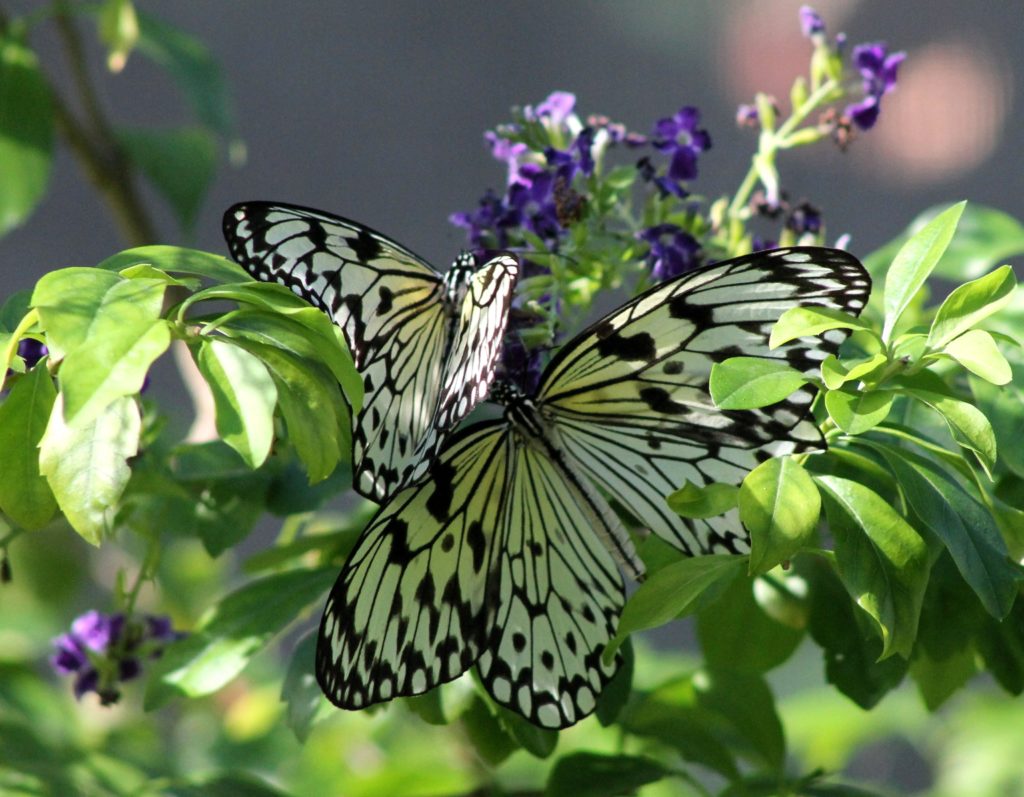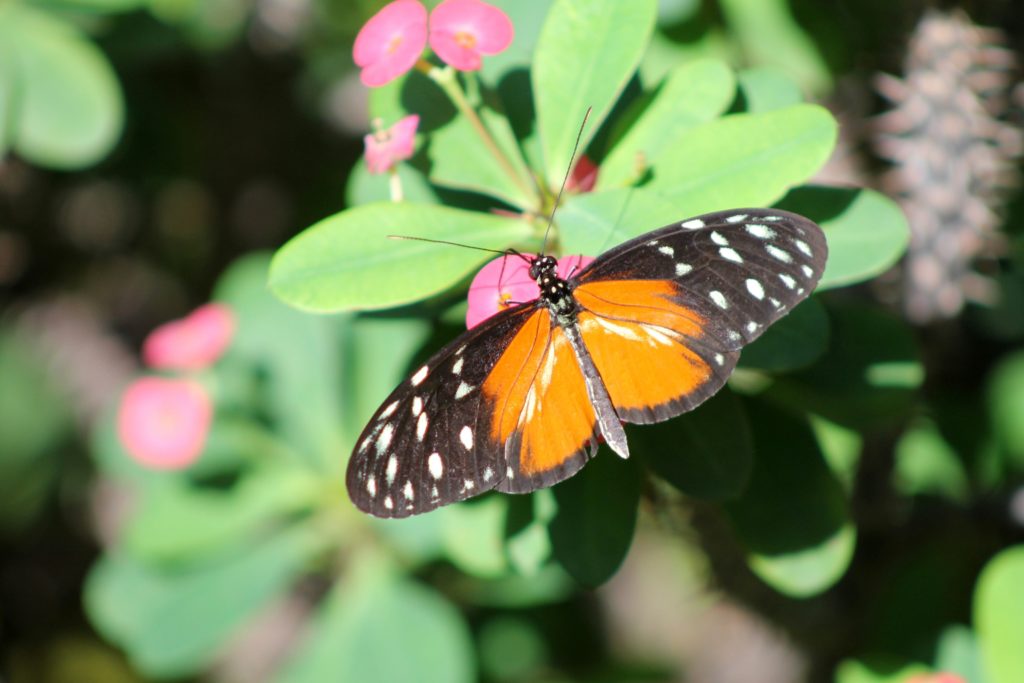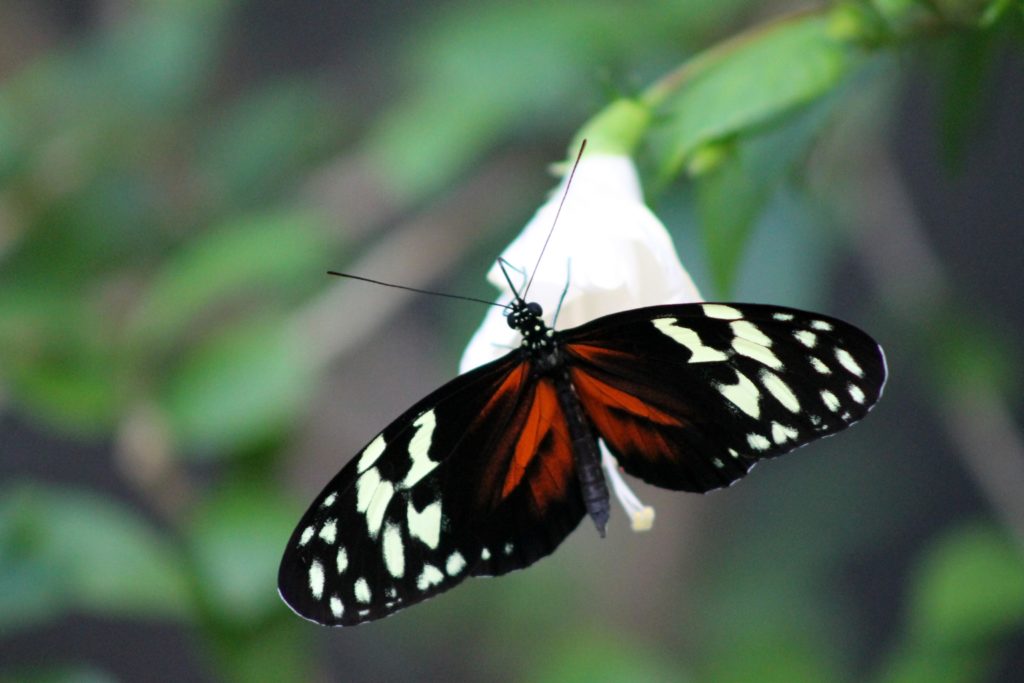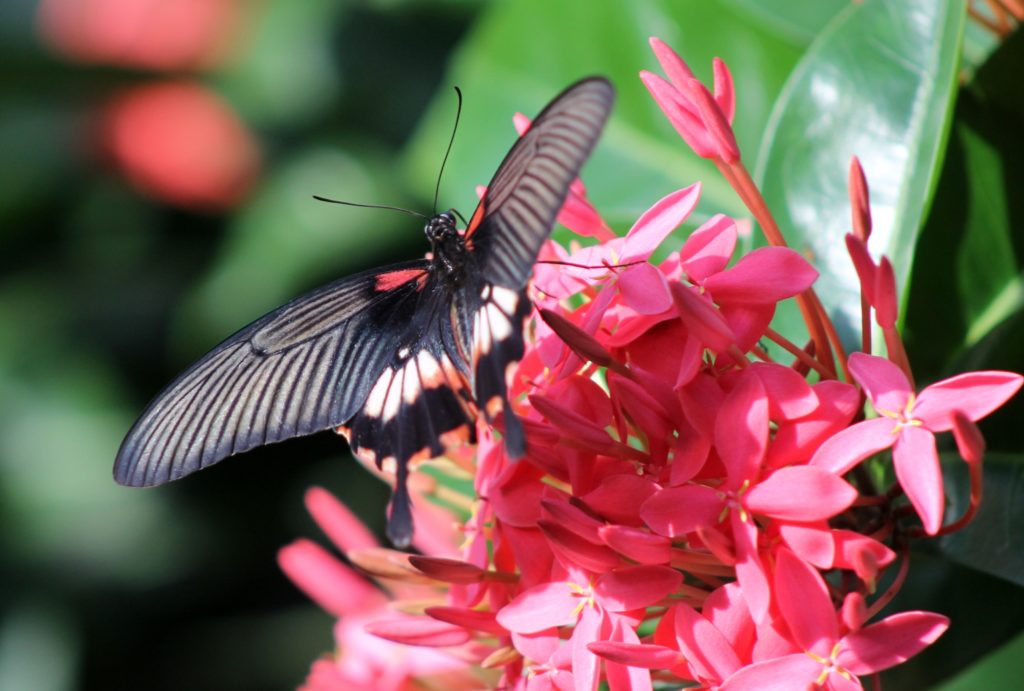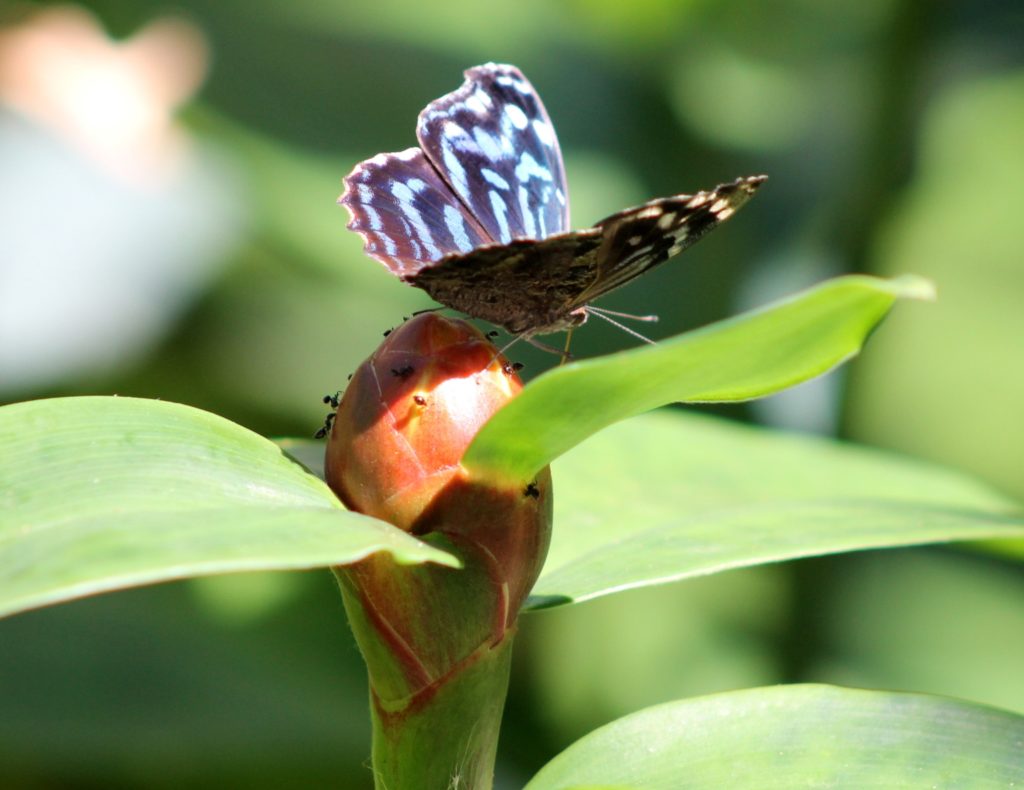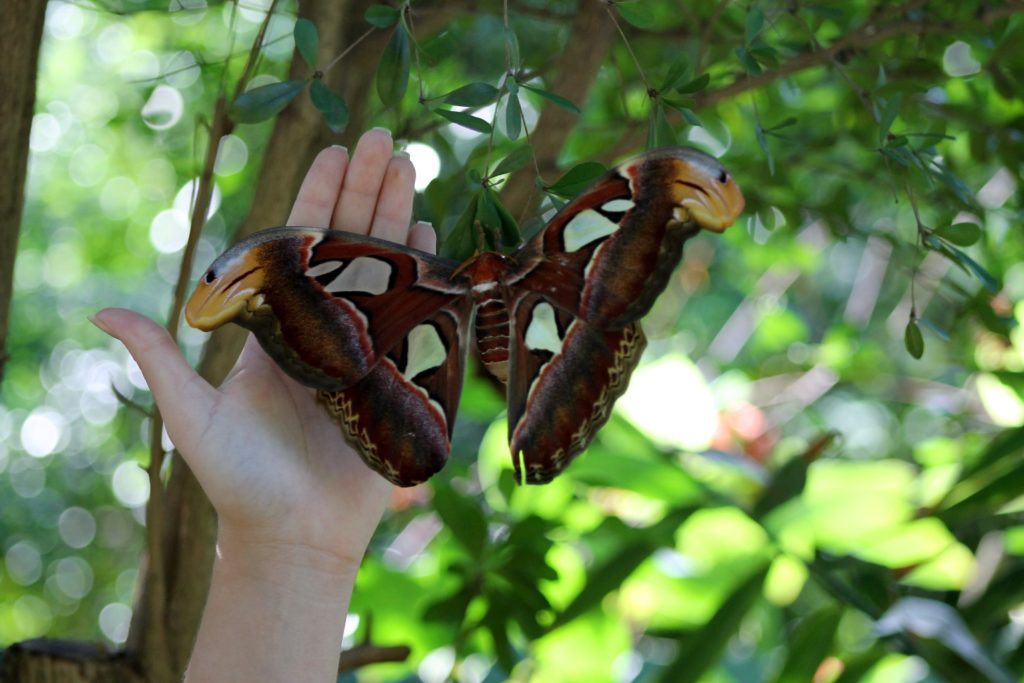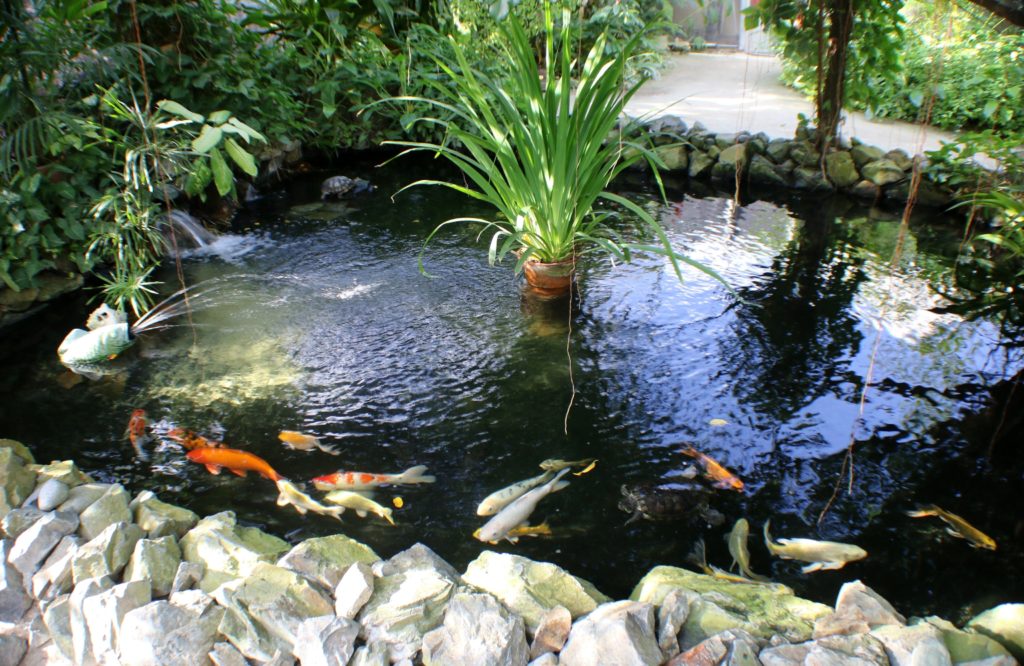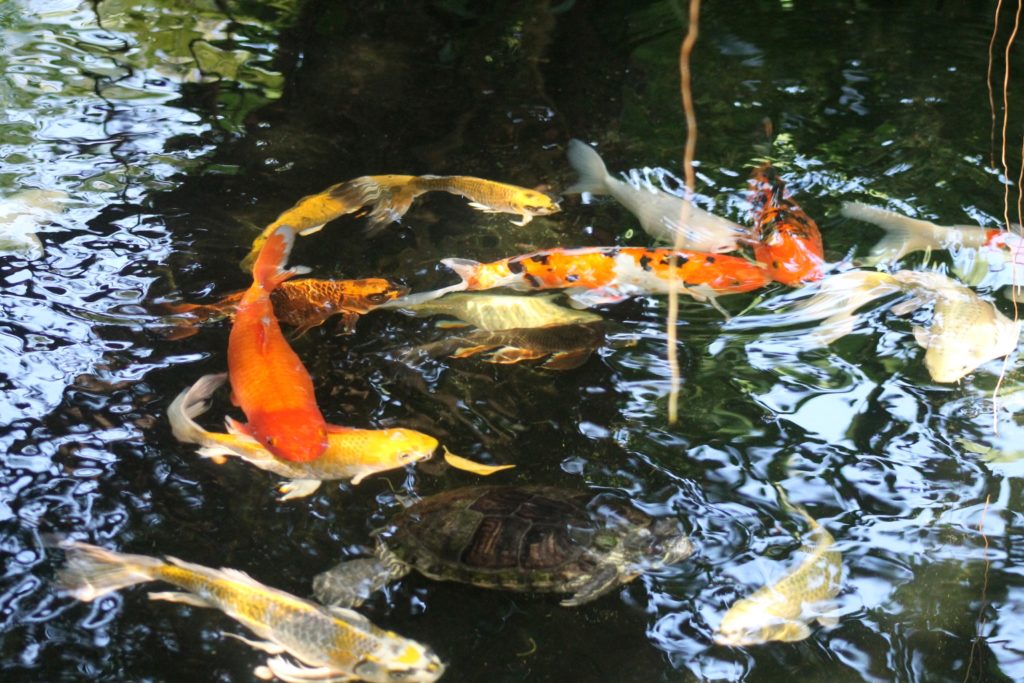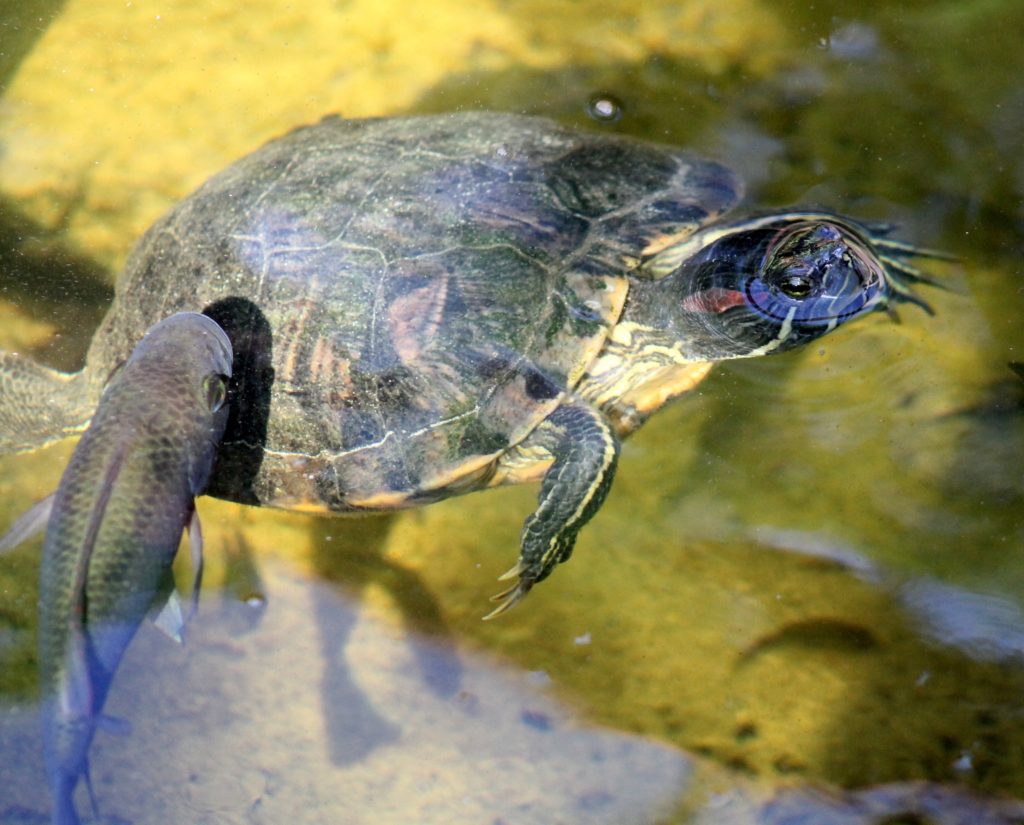In the afternoon, after spending some time on the beach, Dave and I decided to check out the local Butterfly Farm, where hundreds of fascinating, gorgeous butterflies flutter freely in a richly vegetated mesh enclosure. A Scarlet Swallowtail butterfly is in the picture below.
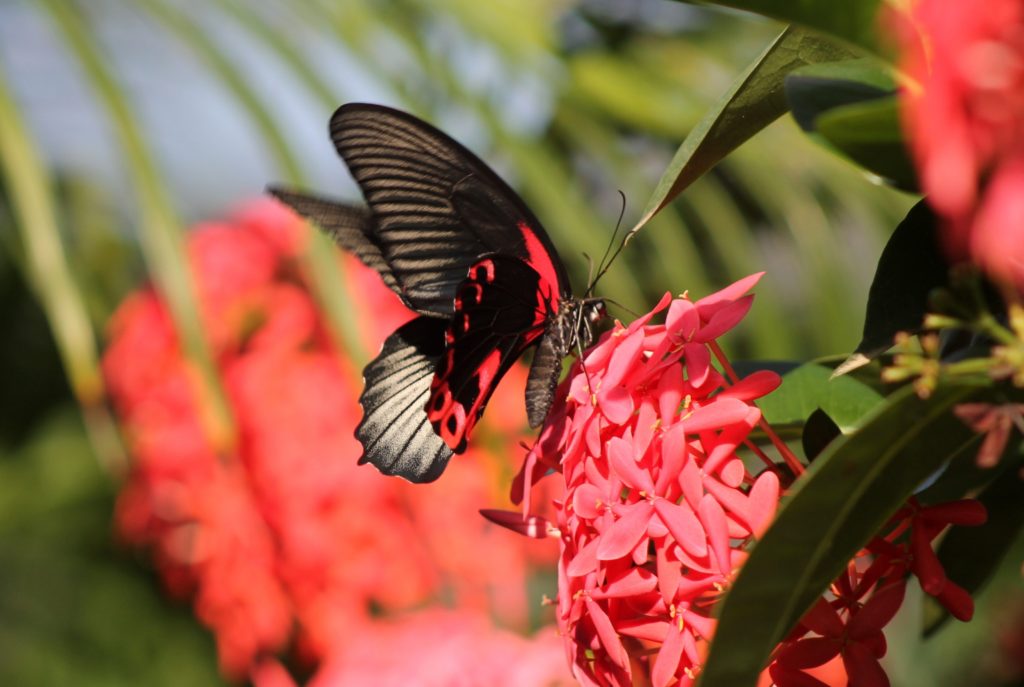
But first, before our visit to the Butterfly Farm, we stopped at a local market in Oranjestad. This Local Market has all the usual souvenirs, arts & crafts and little knick knacks a tourist would want. We took a quick look, but for the most part, we did not find it to be of much interest. We did purchase some souvenirs and T-Shirts. However, we found this unique Big Red Chair in front of the market and climbed on it for some pictures.
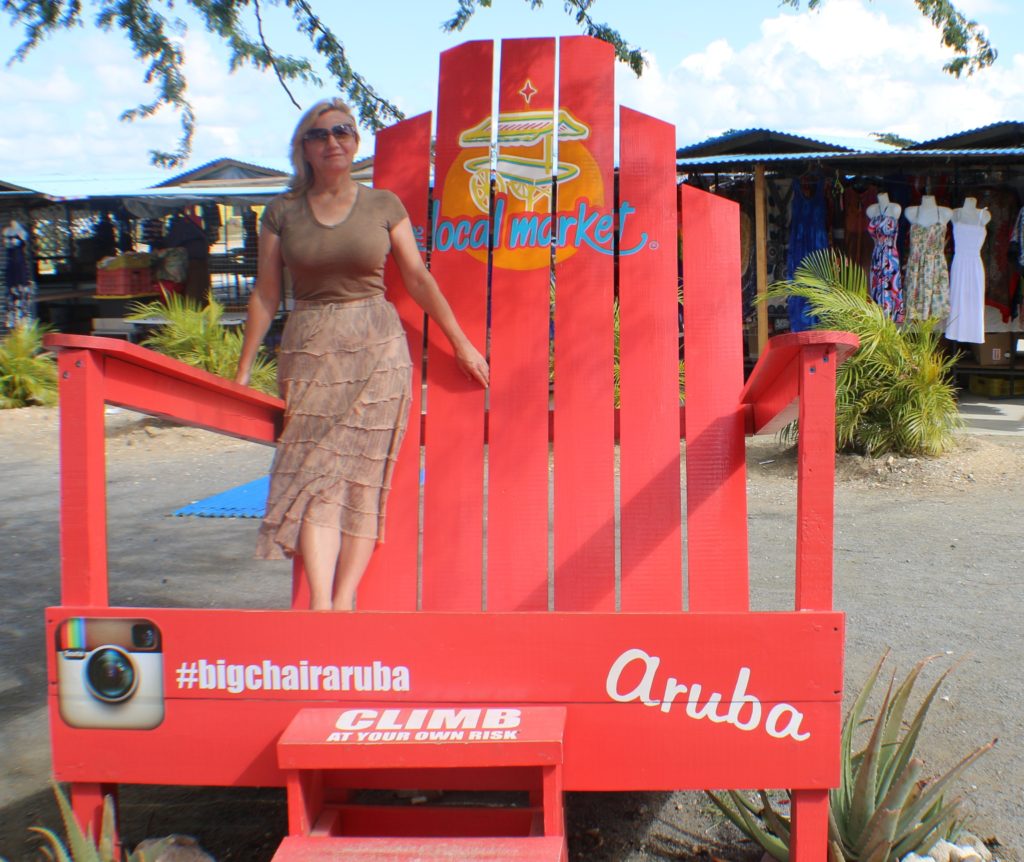
Dave looks really comfortable in this chair. 🙂
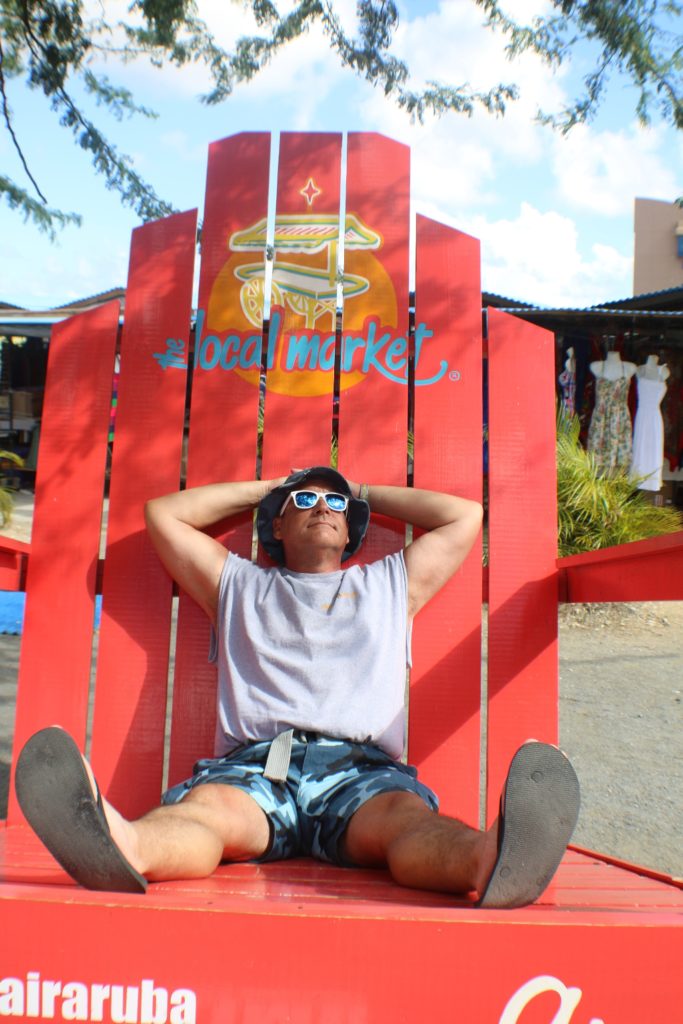
After shopping, we took a short walk along the shore across the street from the local market. There was no beach, just a rocky shore. An interesting set up: a lonely tree and a stone bench next to it.
Nice view of the coast line from there.
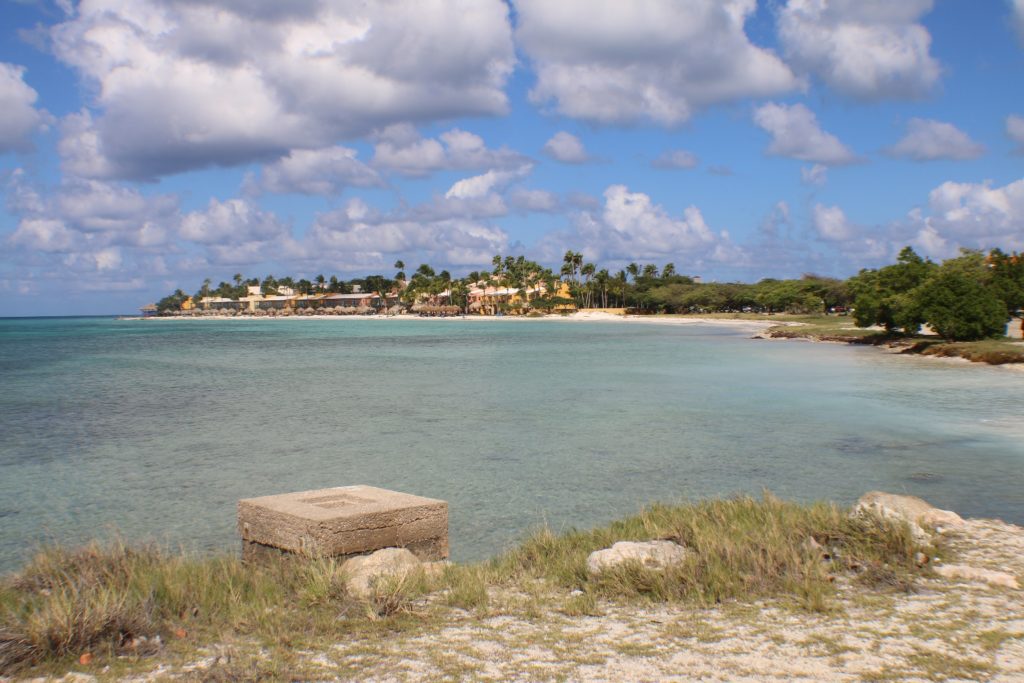
After lunch we drove to the Palm Beach area to visit the Butterfly Farm. There is the entrance with a huge butterfly on the roof.
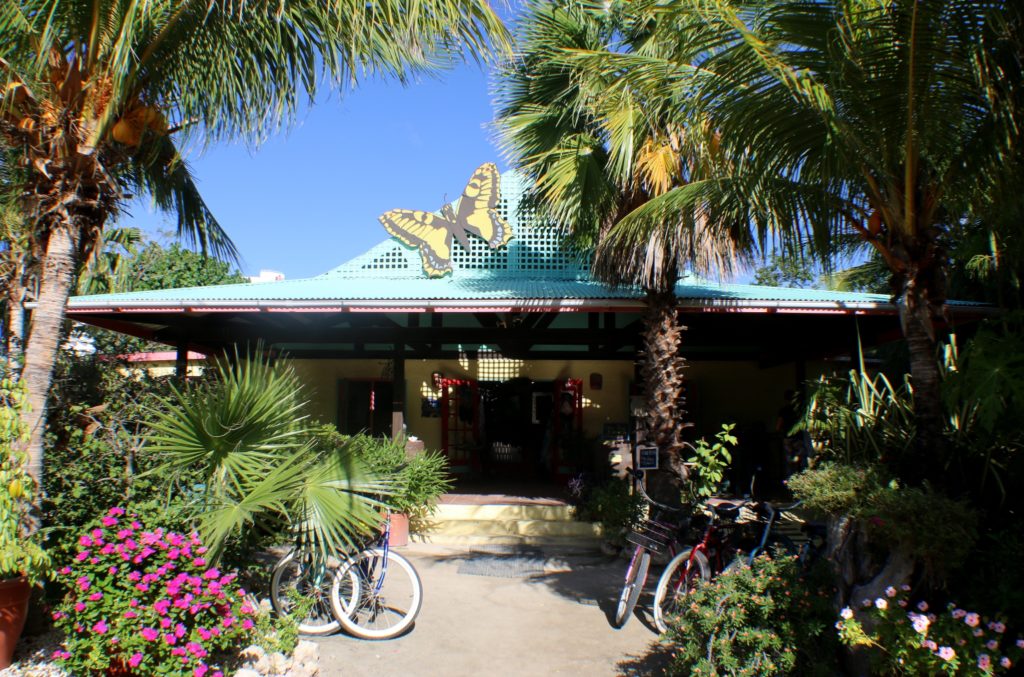
We entered a large netted area just outside of the gift shop, where butterflies flew around freely among lush tropical plants. Our guided tour (included in the admission price) was about to start.
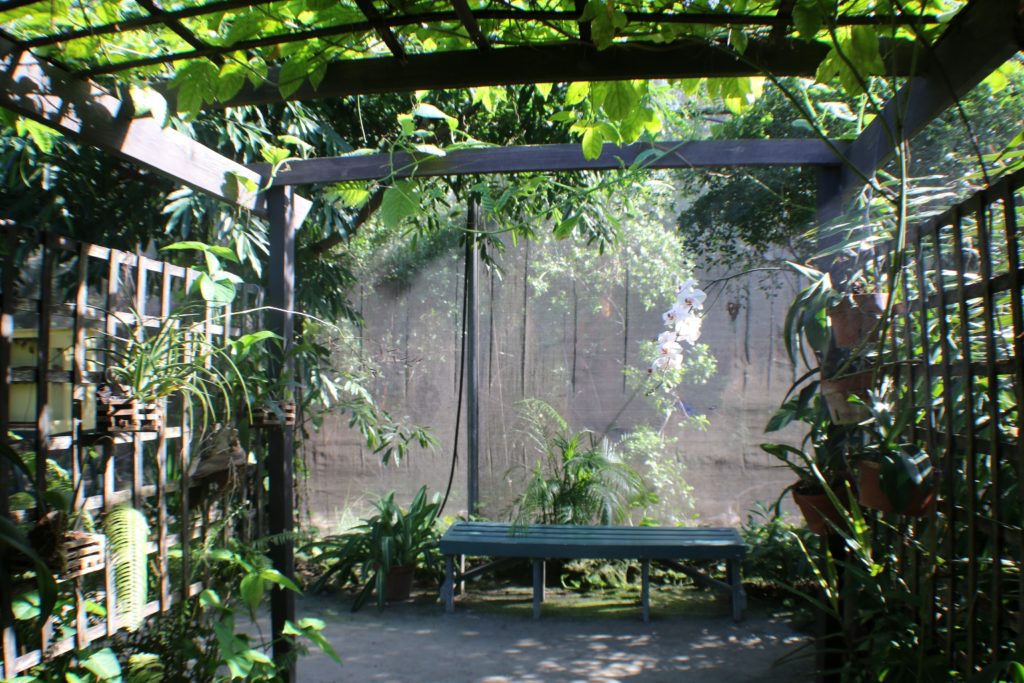
Orchid closeup. One of my favorite flowers.
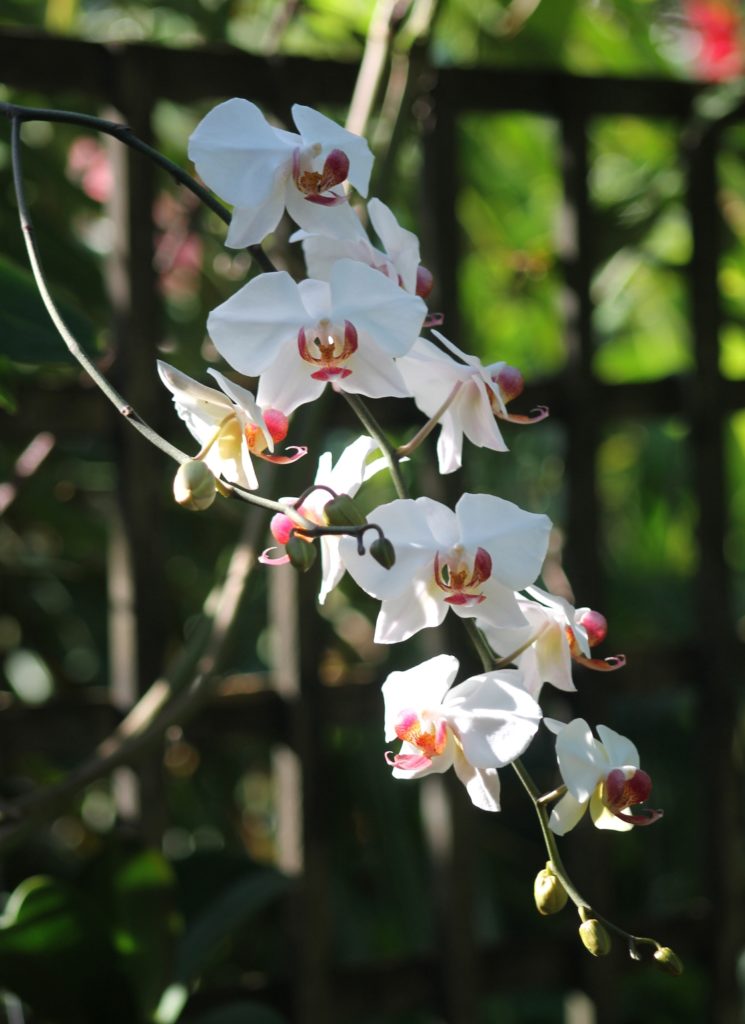
Throughout the lush garden landscape, we saw a few places set out with butterfly food. Here is a bunch of Blue Morpho butterflies.
The Butterfly Farm gave us an opportunity to see butterflies of all shapes, colors and sizes. The guided tour provided easy to understand educational information and an up close look at butterflies in all of their stages of metamorphosis. Our tour guide explained the life cycle of these fascinating creatures from egg to caterpillar to chrysalis to butterfly.
The first stage in a butterflies life is the egg. Using a special type of glue, the female butterfly attaches this egg to the leaf or stem of a plant. Once hatched, the caterpillar will use this plant as food.
According to our tour guide, the only species they have that’s also native to Aruba is the Monarch. The rest are exotic butterflies from all over the globe. A few species are breeding themselves in the farm. The butterflies cannot survive outside the farm because of a limited variety of native plants as food.
Once hatched, the caterpillar begins the stage of eating and growth. As the caterpillar grows it sheds its skin four times to keep up with it’s growth spurts. The Zebra Longwing Butterfly’s black spikes (in the picture below) help keep him from becoming dinner.
When the caterpillar is full grown and stops eating, it becomes a pupa. The pupa of butterflies is also called a chrysalis. At this stage the caterpillar will seek out the perfect twig or leaf where it sheds its outside layer of skin and form a chrysalis. We had a chance to get a glimpse of this transformation.
A caterpillar is hard at work during it’s transformation stage inside it’s chrysalis. It’s during this time that the adult insect begins to form. During our tour, we were shown many different types of butterfly chrysalis, each is as unique as the caterpillar that made it. A jewel like chrysalis.
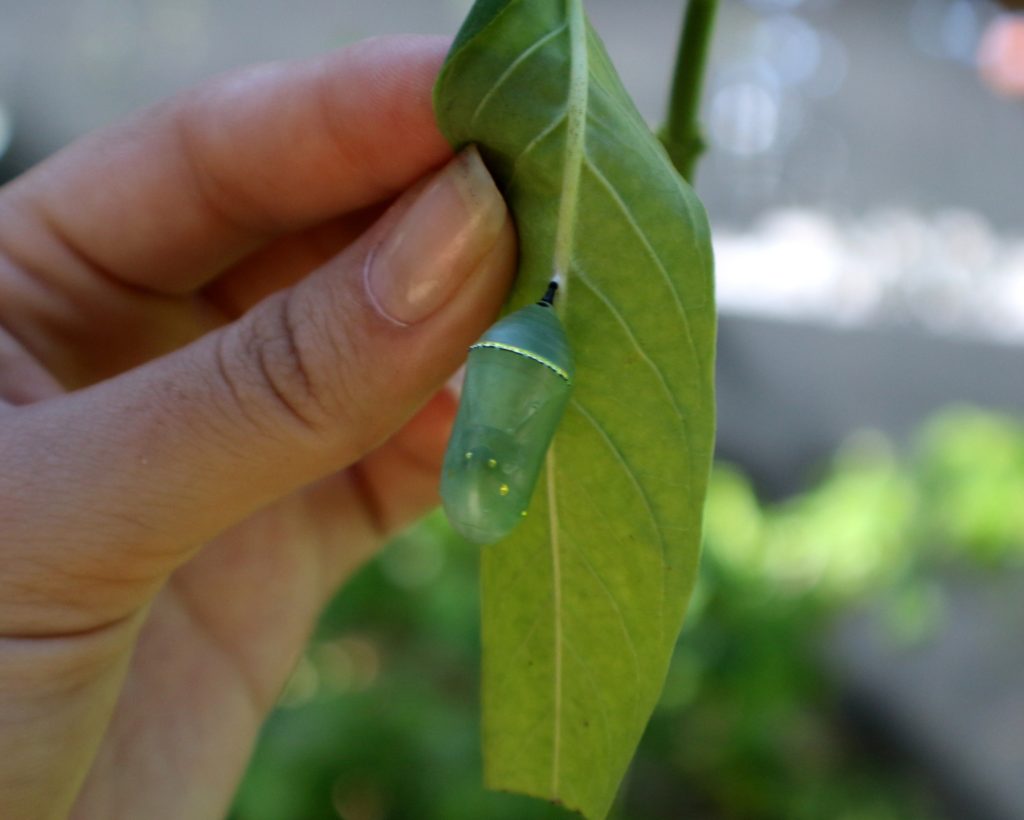
This one looks like a dry leaf.
It is amazing to see the variety of chrysalis on display, some gleaming gold and others like a dried brown leaf.
As an adult, the butterfly is not only colorful but it’s now reproductive and mobile. During this stage, an adult butterfly will court, mate and lay it’s eggs. Depending on the species, an adult butterfly will live in this stage anywhere between one week and one year.
Did you know that once a female butterfly emerges, her sole purpose is to mate? She can only mate with the same species of butterfly, same color, same everything. If a male butterfly of a different species or color is able to trick a female into mating with him she will immediately die afterward. After successfully mating with the same species butterfly the female will carry her eggs until she finds the perfect spot to lay them. After she lays her last egg her job is done and she dies.
Here are some pictures of the beautiful butterflies that we saw there. Orange Tip butterfly.
Scarlet Swallowtail butterfly (Papilio rumanzovia).
I am not sure what kind this one is.
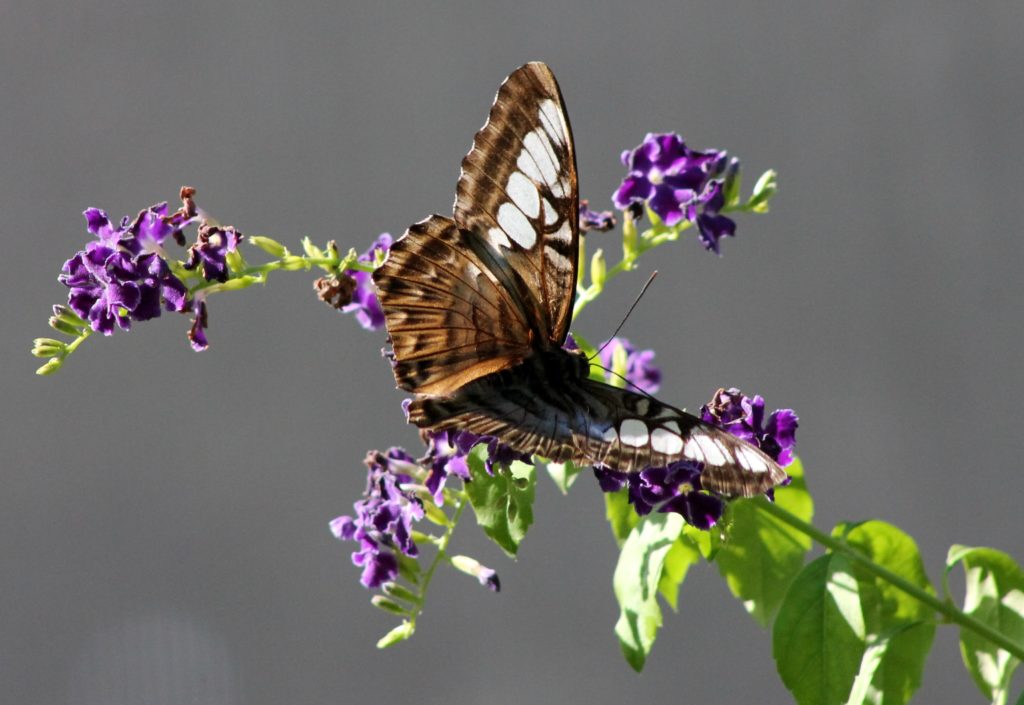
The Giant Swallowtail butterfly.
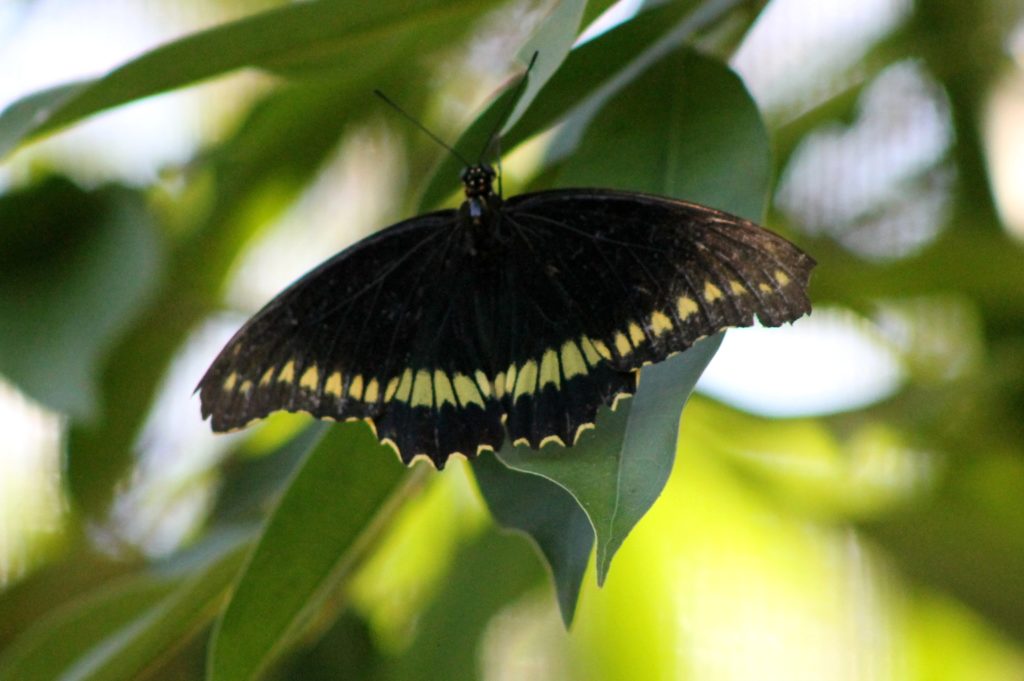
We learned that the Longwing butterflies can digest pollen that they collect on their proboscises, and as a result they are the only butterflies that can actually ingest protein. This allows them to live for up to nine months — the longest of any butterflies. Below is the Zebra Longwing.
There were numerous butterflies flying near the net just beyond this bridge.
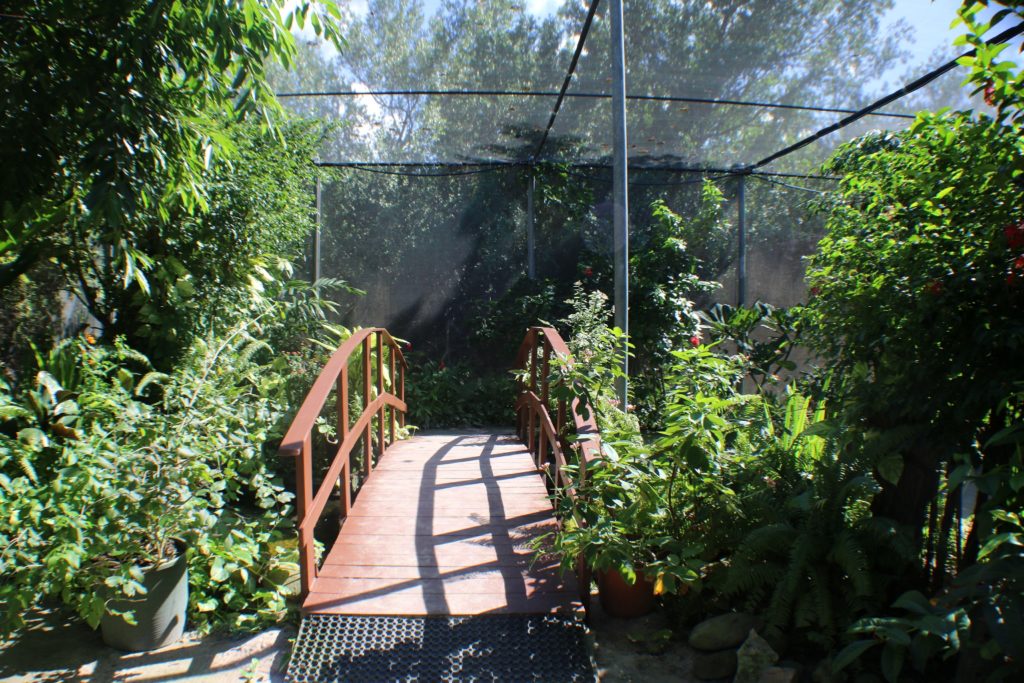
The pond under the bridge is full of fish.
We saw so many amazing butterflies walking through the tropical garden full of flowers.
Among some of the favorites are the iridescent beautiful Blue Morpho butterflies from the rainforests of South America. The tropical Blue Morph butterfly blends in with its surroundings with its wings closed but has beautiful iridescent blue color when they open.
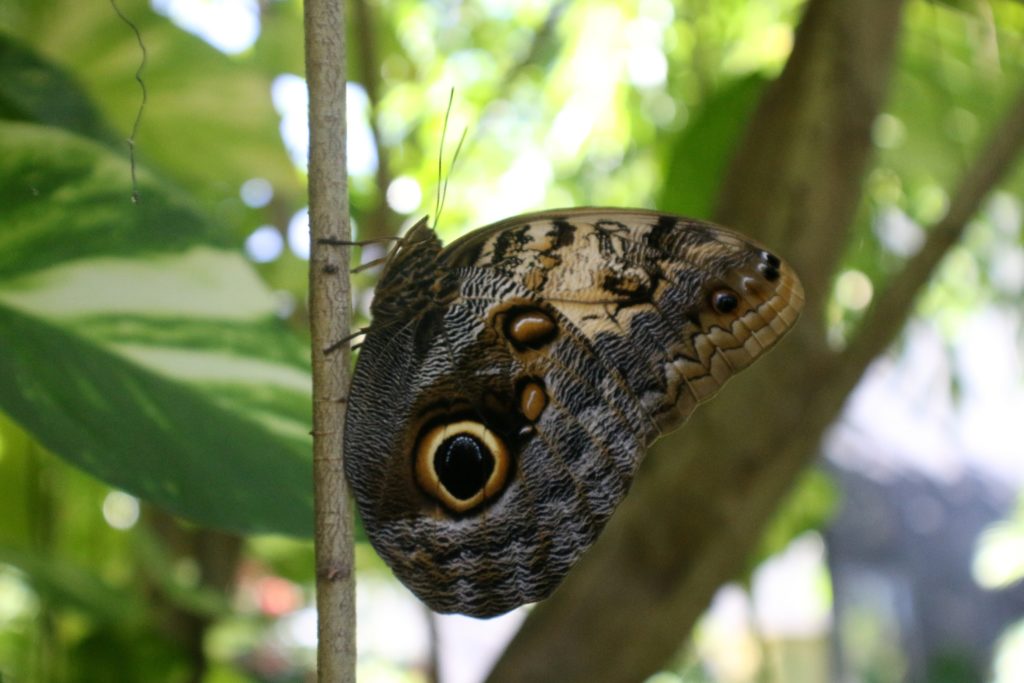
Our guide informed us that the color is not actually blue but appears as such, because the sky is reflected on the scales of their wings.
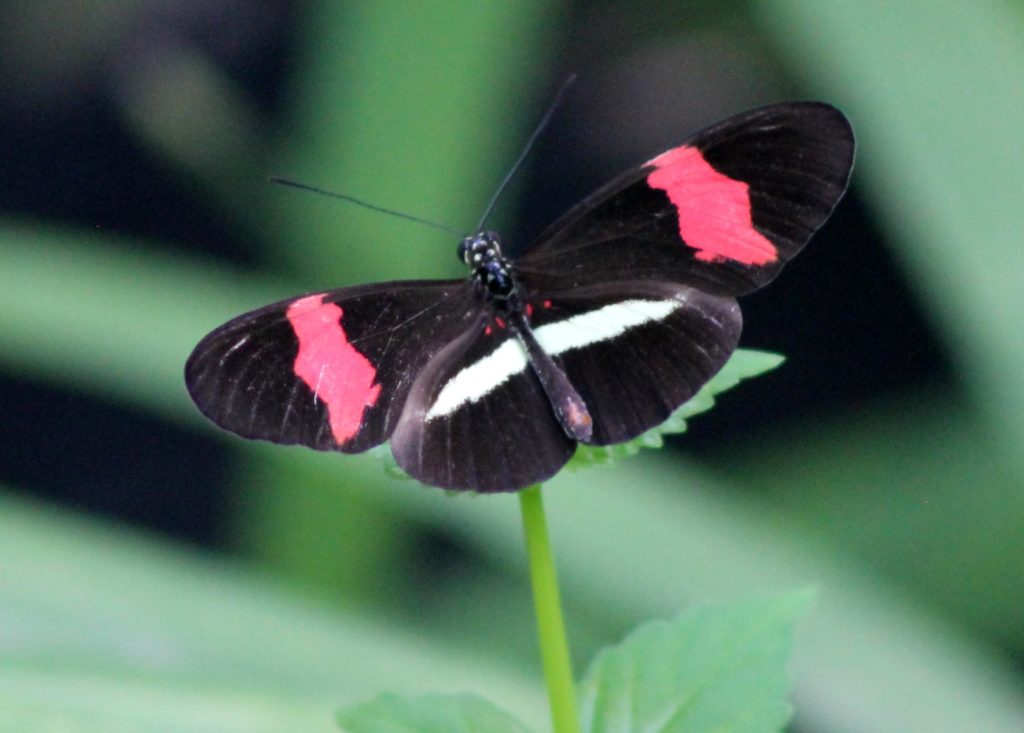
The Lowes Swallowtail butterfly.
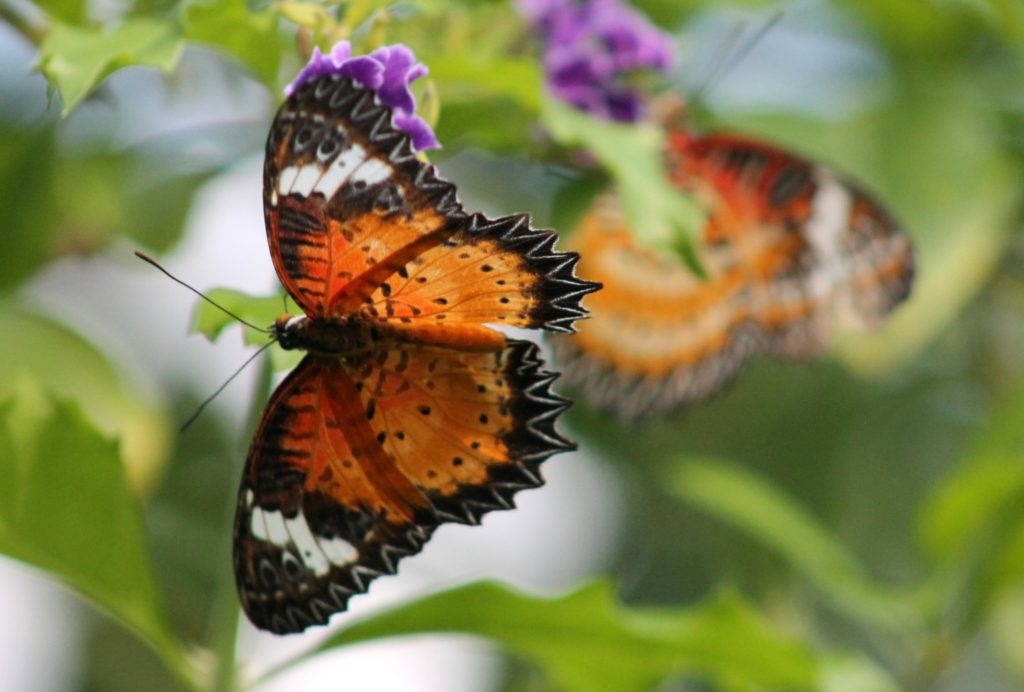
My best guess is Japanese Swallowtail.
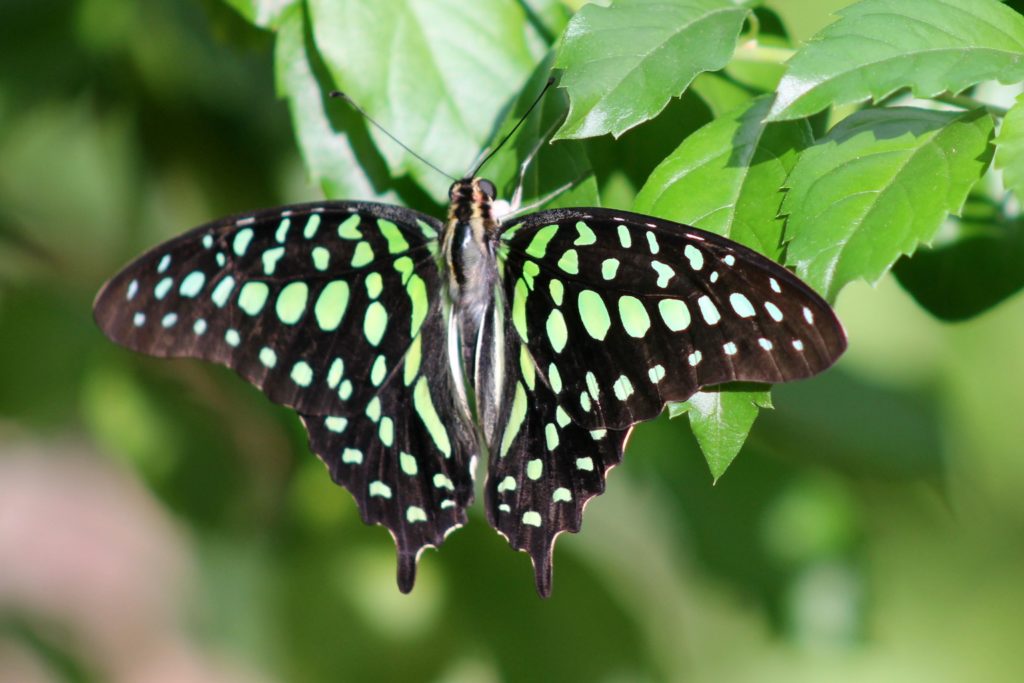
I am not sure about this one, looks like Blue Clipper.
Everything we saw and learned was so interesting, but the most incredible sighting of the day for us was the stunning Atlas Moth – the largest moth in the world. The wingspan of a female Atlas Moth can reach up to 12 inches with a surface area of 62 square inches.
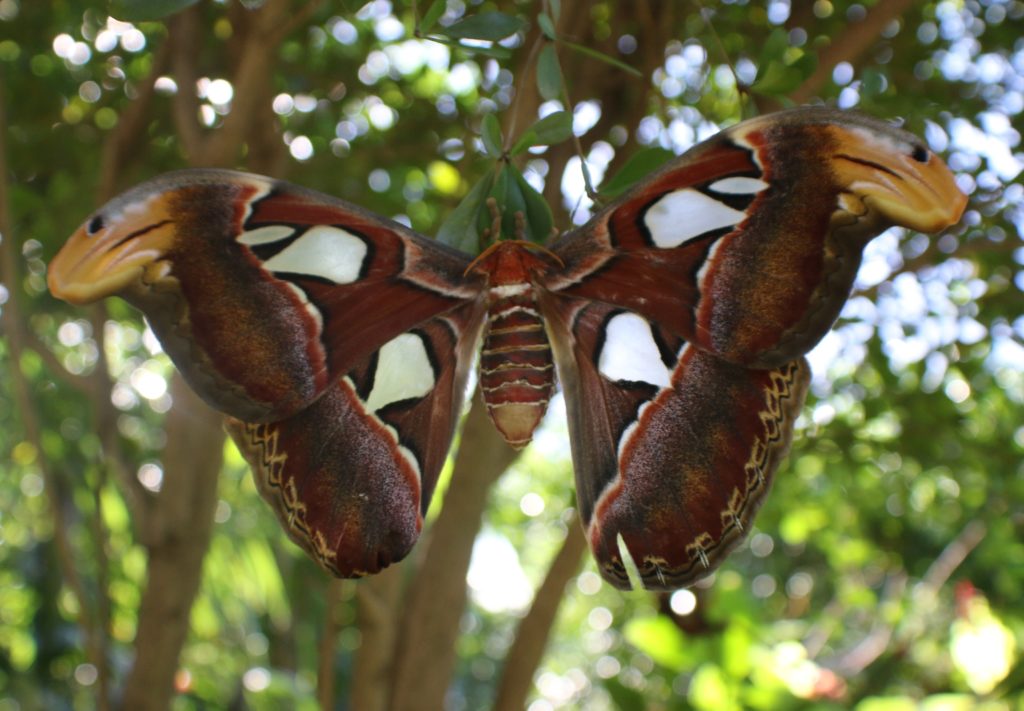
Our tour guide placed her hand next to the Atlas Moth wing to emphasize the size. Sadly, the adult Atlas moths do not have mouths, and as such only live for a few days. 🙁
There is also a Koi (Japanese fish) pond and fountain that really add to the tranquil atmosphere.
It was enjoyable watching these colorful fish. They moved pretty quick too, except for the turtle.
Close up of Painted turtle from in the pond.
We were given a complimentary return ticket for the duration of our vacation, so we decided to visit the farm again the next morning, when the butterflies are the most active.
